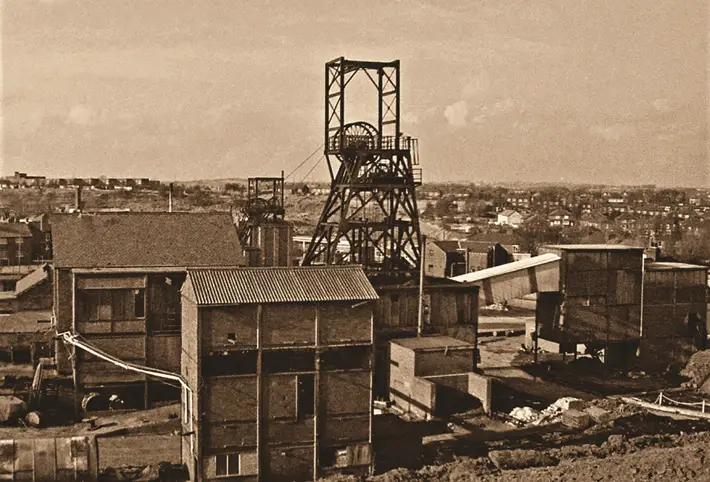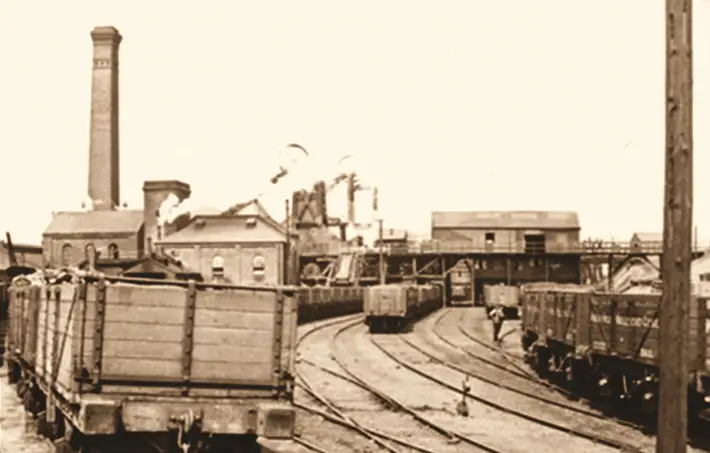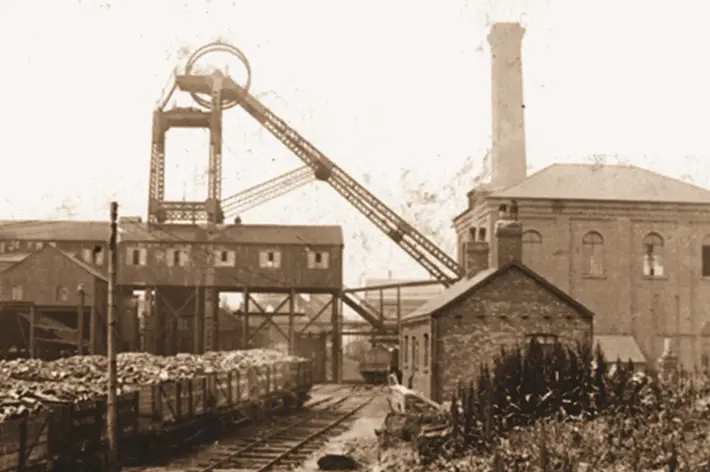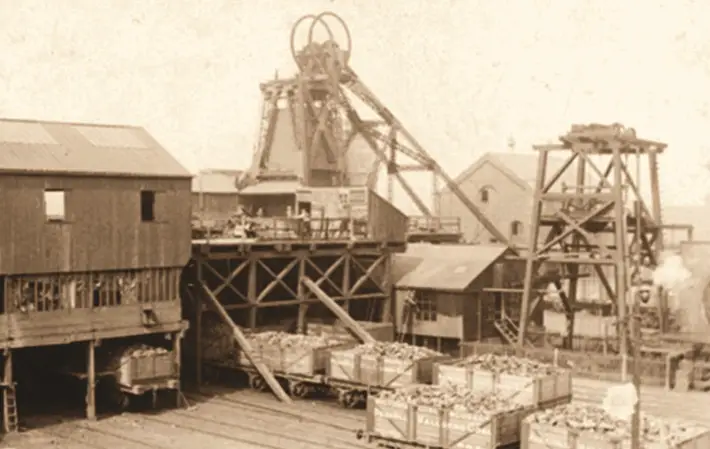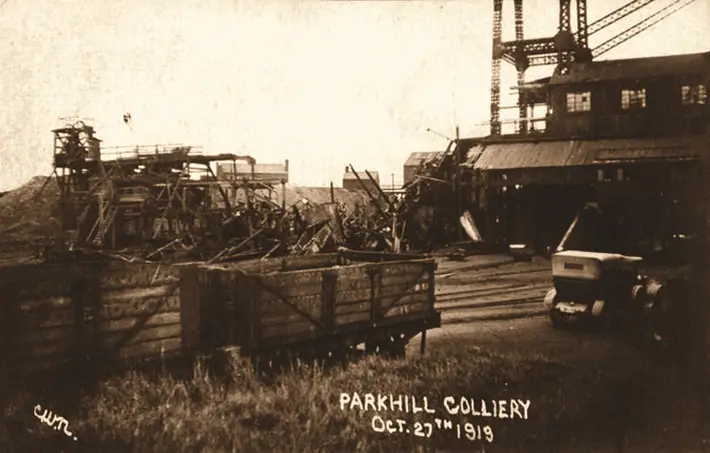The History of Coal Mining in Wakefield
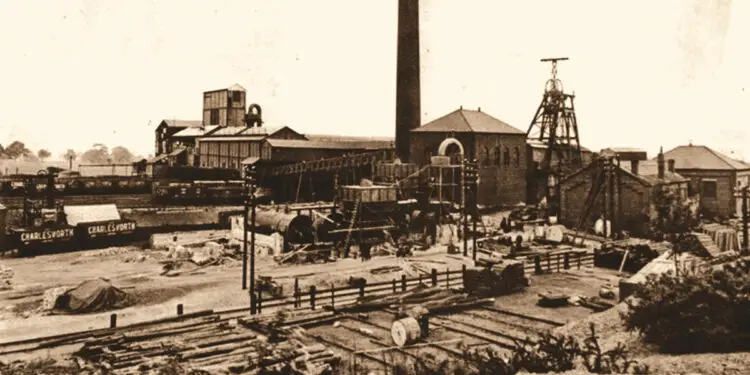
Coal had been extracted in Wakefield since the Middle Ages, but it was not until the eighteenth century that mining developed into a major industry. The first concern we have details of is Newmarket Colliery, which was in operation by 1775. The concern was bankrolled by Unitarian James Milnes. The coal was transported to the coal staithes on the newly opened canal for export.
When this pit closed in 1983 it was one of the oldest working pits in the UK. It was sunk in 1837 by the coal kings of the time – the Fentons. It was later owned by the Charlesworths. Newmarket workings ran as far as Lane Ends under Stanley and are said to be the cause of subsidence at Stanley Church. At one time 99 per cent of men who lived at Bottomboat worked at this colliery.
By 1790 Josiah Smithson had developed the Haigh Moor Colliery along the Alverthorpe Valley. William Fenton was extracting coals from Outwood, which developed into Lofthouse Pit. At Flockton the Milnes family developed a colliery system, with one of their pits being Cap House Colliery.
Beginning in the 1780s they laid out a wooden ‘Newcastle Road’ – i.e. an early railway, perhaps the first in the West Riding, to carry the coals from Flockton to the canal. The railway witnessed the building of the world’s first railway tunnel and railway viaduct, but only the latter remains. James Milnes of Flockton (not to be confused with either James Milnes of Wakefield) was the consulting engineers to Smithson at Haigh Moor.
The railway was relaid with iron rails in 1825 to provide the necessary transport for coal from the colliery. The New Flockton Colliery finally closed in 1893 after a prolonged strike. During the nineteenth century more mines were sunk so that there were forty-six small mines in Wakefield and the surrounding area by 1869. The National Coal Board eventually became Wakefield’s largest employer, with Manor Colliery on Cross Lane and Park Hill colliery at Eastmoor surviving until 1982.
“Share in the profitability”
Nationally important innovations in colliery management took place in 1863 at Methley, Streethouse, Snydale and Whiwood collieries – part of the Briggs empire of collieries, ironworks, brick and glass works. Henry Briggs and his son decided to promote a scheme of co-operative management, under which both customers, officials and workmen could share in the profitability of the undertaking.
The scheme provided for the division of the profits after proper provision for depreciation, etc. And, after setting aside a sum to remunerate the invested capital, it was to be shared equally between shareholders and employees as a bonus percentage on the money invested in shares, or for non-shareholders as a similar percentage on wages earned during the year.
There were no obligation for workmen or officials to put their share of the bonus back to buy shares, but many did so, and therefore they received not only the current bonus on earnings, but also the dividend on shares bought out of past bonuses; in addition, it was provided that the employees should elect two members to the board of directors, provided that no strikes took place and that all disputes in the event of dissatisfaction should be settled by arbitration. This scheme proved highly satisfactory for many years and upward of £40,000 in bonus pay was divided among the work people, and more than 300 became shareholders.
To enable this to be arranged a new company was registered as a limited liability company with a capital of £450,000, of which £247,000 was to be paid up and issued in the form of shares to shareholders. Included with the colliery assets and farms taken over by the new company, the Yorkshire Coal and Steam Ship Company also became part, which had invested £60,000 in four ships called the Altona and Marianne Briggs of 700 tons each and the Dinnington and Whitwood of 500 tons and 400 tons respectively.
The first two traded from Goole to Hamburg and the other two from Goole to Rouen. The large boats on the Hamburg run had reasonable passenger accommodation for fifteen persons each. From 1865 to 1868 the chairman of the company was Mr Henry Briggs, followed by Henry Currer Briggs from 1868 to 1881, then Arthur Currer Briggs. The company was nationalised in 1947/48.
“Trapping men down the pit”
Henry Briggs was a confirmed Liberal and believed in deciding his own code of conduct; he was one not easily deterred from his objectives. He was a most conscientious Unitarian and spent much of his spare time in promoting the education of the young. He was noted as a keen and regular Sunday school teacher at Westgate Chapel, Wakefield, and on many occasions acted as a lay preacher and occupied the pulpit when the need arose. He was a powerful man and eminently just, and, being 6 feet 2½ inches in height, made a notable figure. His wife ably supported him and, as she was 6 feet in height, they were noted as an imposing couple.
Other important pits around Wakefield included Manor Colliery and Park Hill Colliery. Originally owned by the Hudson family, Park Hill was worked from 1863 up to 1983. In 1919 a fire destroyed most of the surface buildings, trapping men down the pit. The ventilation fan was stopped to prevent fumes being carried into the workings while a rescue team was assembled. Many men were put out of work by the fire, not returning to work until the damage was repaired.
Tragedy struck again in 1974 when nine miners became trapped by a 200-ton roof falling more than 600 feet down. A rescue operation was mounted after 12 yards of roof caved in around 250 yards behind the men. After clawing their way through boulders and rubble the trapped men managed to get through an 18-inch gap, where they met members of the three rescue teams that had been sent in to dig them out.
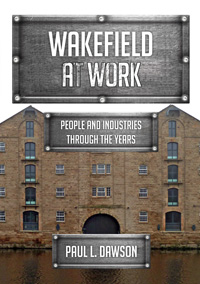 A model village of more than 150 back-to-back houses was built at New Sharlston from 1864 to house Sharlston Colliery Company workers. The houses cost just over £100 each and the streets were named Long Row, Crossley Street and High Street. A Methodist chapel and a day school were built on Crossley Street. The homes became the property of the National Coal Board in 1947. In 1961 twenty-eight back-to-back houses were converted into fourteen through houses. The school and the chapel have been demolished. Many will also remember Roundwood and Manor collieries.
A model village of more than 150 back-to-back houses was built at New Sharlston from 1864 to house Sharlston Colliery Company workers. The houses cost just over £100 each and the streets were named Long Row, Crossley Street and High Street. A Methodist chapel and a day school were built on Crossley Street. The homes became the property of the National Coal Board in 1947. In 1961 twenty-eight back-to-back houses were converted into fourteen through houses. The school and the chapel have been demolished. Many will also remember Roundwood and Manor collieries.
No pitheads survive in Wakefield. The proud mining history of the city is preserved at the National Coal Mining Museum for England at Cap House Colliery.
Article taken from ‘Wakefield at Work’ by Paul L. Dawson, published by Amberley Publishing, £14.99 paperback
